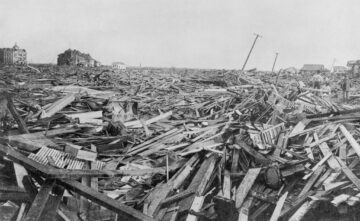Ted Nordhaus in The New Atlantis:

Discussions of weather-related natural disasters in recent years have largely focused on one particular human factor: the consequences of an anthropogenically warming planet. But the heavy concentration of catastrophic disasters prior to the period when climate change began to significantly warm the planet should remind us that the earth’s climate has always been highly variable, extreme, and dangerous. What determines whether hurricanes, floods, heat waves, and wildfires amount to natural disasters or minor nuisances, though, is mostly not the relative intensity or frequency of the natural hazard but rather how many people are in harm’s way and how well protected they are against the climate’s extremes.
Infrastructure, institutions, and technology mediate the relationship between extreme climate and weather phenomena, and the costs that human societies bear as a result of them. Air conditioning mitigates suffering during heat waves. Dams, reservoirs, and flood control systems keep water from inundating population centers during intense rainstorms. Building codes and hardened infrastructure help the built environment withstand hurricanes, tornadoes, and other extreme weather events. Multi-day forecasts, early warning systems, and emergency response capabilities allow people to anticipate climatic extremes, prepare for them, and survive them.
The implications of this point will be counterintuitive for many.
More here.
